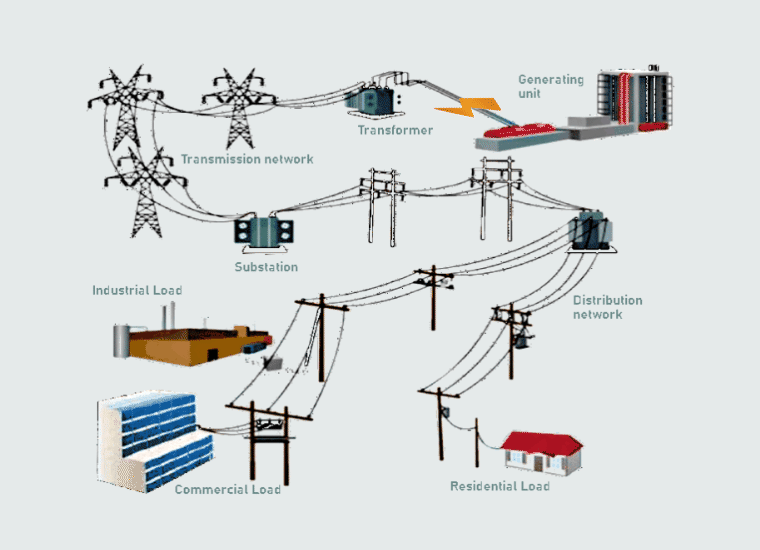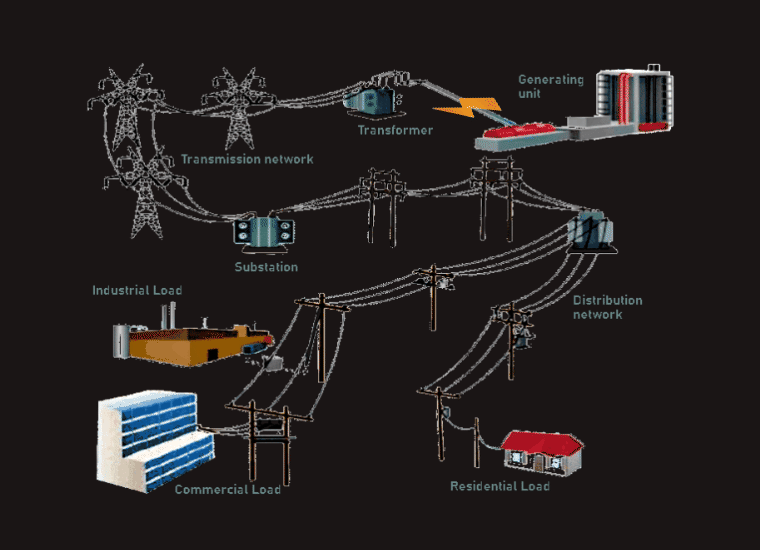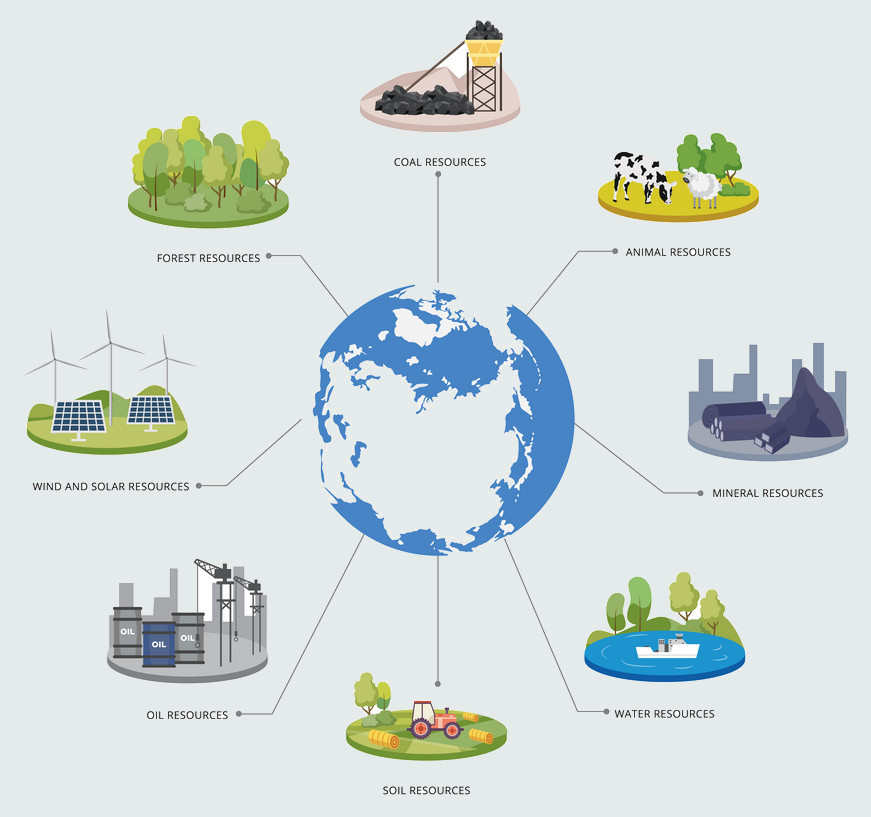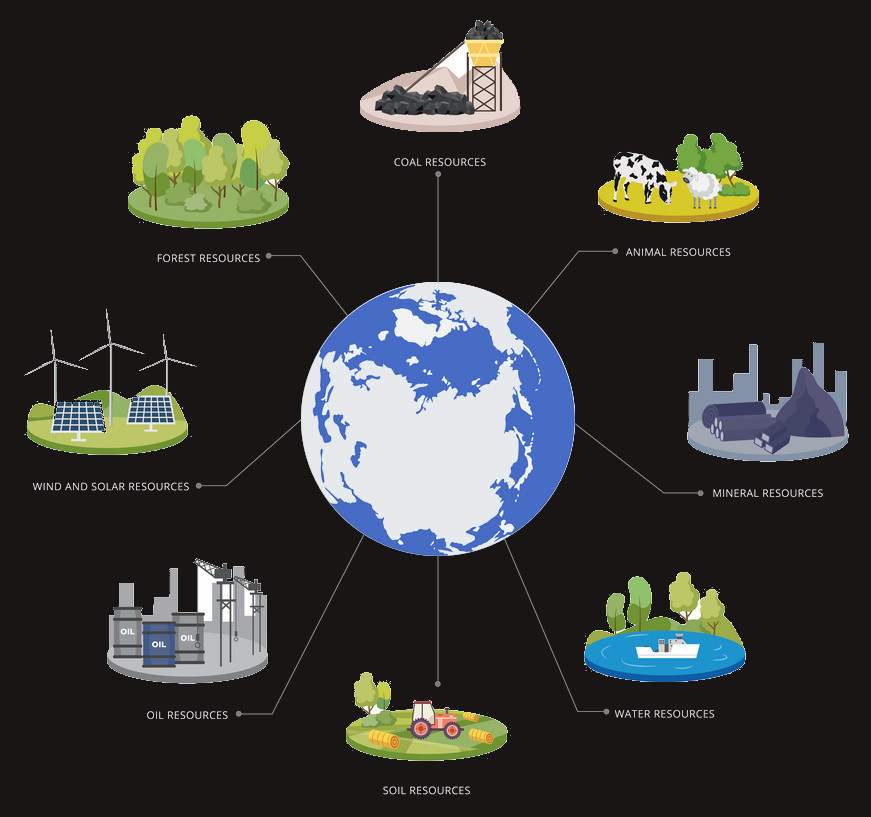We said before that in the U.S., as well as the rest of North America and parts of South America and Japan, the ac system frequency is 60 Hz, while in the rest of the world it is 50 Hz.
Now, maybe we can ask ourselves a question: Why 60 Hertz?
There is no fundamental physical law that states that AC power must be generated at 60 Hertz. In fact, many parts of the world use 50 Hertz as the AC generation frequency. It’s possible to generate any desired frequency of AC waveform with a properly designed generator. Today’s use of 60 Hertz for AC power generation stems from an initial design decision by Tesla. The general consensus on Tesla’s decision is that it is the lowest frequency that would not cause a light to flicker visibly. Since AC power is rapidly switching directions, there are brief instants where no current flows into the light. This causes the light to flicker. Tesla noted that at 60 Hertz and above, the human eye could not discern the flicking effect anymore.
Structure of the electric power system
The electric power system consists of generating units where primary energy is converted into electric power, transmission and distribution networks that transport this power, and consumer's equipment (load) where power is used. 

Generation
Electric power is produced by generating units, housed in power plants which convert primary energy, that comes from a number of sources, into electric energy. Sources of primary energy are: fossil fuels, nuclear, hydro, wind and solar power. For example, in "thermal generation", generating units burn fuel to convert chemical energy into thermal energy, which is then used to produce high-pressure steam. This steam then flows and drives the mechanical shaft of an ac electric generator that produces alternating voltage and current, or electric power at its terminals. These generators have three terminals and produce three ac voltages, one at each terminal, which are 120 degrees out of phase with respect to each other. This set of voltages is known as "three-phase ac voltage". Three-phase ac has multiple advantages over single-phase ac, including requiring less conducting material in the transmission lines and allowing the total instantaneous power flowing from the generator to be constant.
Hydro and wind generating units convert the kinetic energy of water and wind, respectively, directly into rotation of the electric generator's mechanical shaft.
Solar photovoltaic generating units are quite different and convert the energy in solar radiation directly into electrical energy.
There are also another types of generating units, like nuclear units (similar to thermal units where thermal energy needed to produce steam comes from nuclear reactions), solar-thermal units and geothermal units (use the Sun's radiation and Earth's warmth, respectively, to heat a fluid and then follow a conversion process similar to thermal units), then gas, or combustion, turbine where pressurized mixture of natural gas and air is burned that drives the electric generator.
From the operational perspective of the electric power system, generating units are classified into three categories:
- · baseload
- · intermediate
- · peaking units
Baseload units are use to meet the constant, base power needs of the system. They run continuously throughout the year except when they have to be shut down for repair and maintenance. They must be reliable and economical to operate. Nuclear and coal plants, generally, are used as baseload units. They are, however, expensive to build and have slow ramp rates which means their output power can be changed only slowly (on the order of hours).
Intermediate units, also called cycling units operate for extended periods of time, but not at one power continuously; they have the ability to vary their output more quickly than baseload units. Combined-cycle gas turbine plants (which have a gas turbine and a steam turbine, they reuse the waste heat from the gas turbine to generate steam for the steam turbine and hence achieve higher energy conversion efficiency) and older thermal generating units generally are used as intermediate units.
Peaking units operate only when the system power demand is close to its peak. They have to be able to start and stop quickly, but they run only for a smaller number of hours in a year. Gas turbine and hydroelectric plants with reservoirs are generally used as peaking units. Gas turbines are the least expensive to build but have high operating costs.
Transmission
The transmission system carries electric power over long distances from the generating units to the distribution system. The transmission network is composed of power lines and stations/substations. Transmission system power lines are generally attached to high towers, but they are sometimes made up of insulated cables buried underground. Stations and substations house transformers, switchgear, measurement instruments and communication equipment.
Transformers are used to change the level of the transmission voltage. Switchgear includes circuit breaker and other types of switches used to disconnect parts of the transmission network for system protection or maintenance. Measurement instruments collect voltage, current and power data for monitoring, control and metering purposes. Communication equipment transmits these data to control centers, and also allows switchgear to be remotely controlled.
Transmission networks carry power over long distances, at high voltages to reduce transmission losses, limit conductor cross-sectional area and in order to maintain safety, high transmission voltages require good insulation and large clearance from the ground, trees and any other structures. Although most transmission is three-phase ac, for very long distance transmission, HVDC can be beneficial because transmission lines present no reactive impedance to dc. HVDC also only requires two conductors instead of three, but HVDC transmission lines require expensive converter stations (utilizing power electronics technology) at either end of the line to connect to the rest of the ac system.
Transformers at transmission substation convert transmission voltages down to lower levels to connect to the subtransmission network or directly to the distribution network. Subtransmission carries power over shorter distances than transmission and is tipically used to connect the transmission network to multiple nearby relatively small distribution networks.
The power flow through a particular transmission line (transmission and subtransmission networks are usually in a mesh configuration where there are multiple possible flow paths) depends on the line's impedance and the amplitude and phase of the voltages at its ends. However, precise prediction of the power flowing down a particular transmission line is a very difficult task (predicting these flows requires substantial computing power and precise knowledge of network voltages and impedances, which are rarely known with high precision), and the presence of multiple paths between generation and load in the transmission network also leads to flows on undesirable paths, which are known as "loop flows".
Some very large consumers take electric power directly from the transmission or subtransmission network. However, the majority of consumers get their power from the distribution network.
Distribution
Distribution networks carry power from transmission or subtransmission to consumers. Power is carried in distribution networks through wires, either on poles or underground, in urban areas. Lower voltages are used in distribution networks; they are distinguished from transmission networks by their voltage level and topology. Distribution substations have transformers to step voltage down to the primary distribution level, like transmission substations - distribution substations also have circuit breakers and monitoring equipment, but are generally less automated than transmission substations.
Consumption
Electricity is consumed by a wide variety of loads, including lights, heaters, electronic equipment, household appliances and motors that drive fans, pumps and compressors. These loads can be classified based on their impedance, which can be resistive, reactive or combination of the two. There are differences in theory and practice; in theory, loads can be purely reactive, and their reactance can be either inductive or capacitive. In practice, however, the impedance of most loads is either purely resistive or a combination of resistive and inductive reactance. Heaters and incandescent lamps have purely resistive impedance, while motors have impedance that is resistive and inductive. Purely resistive loads only consume real power, loads with inductive impedance draw reactive power, while loads with capacitive impedance supply reactive power.
Because of the abundance of motors connected to the network, the power system is dominated by inductive loads. Hence, generating units have to supply both real and reactive power. Since capacitors produce reactive power, they often are connected close to large inductive loads to cancel their reactive power, and so increase the effective power factor of the load which implies reducing the burden on the network and the generators.
Renewable and non-renewable energy sources
All of us take food for survival and growth of our body. Vehicles like motorcycles, tractors, buses, trucks, ships and aeroplanes require fuel for their running. Even for cooking food we require fuel. From the time we wake up to the time we go to sleep at night, energy plays an important role in our life. Energy is defined as the ability to do work. We require energy for all types of activities we do. An engine uses energy of its fuel to move a car along. A battery stores the energy needed to switch on the radio or tape recorder. The heavy flow of water can break the banks of rivers as it also has energy in it. Similarly the wind also carries enough energy to shake trees. Since the beginning of mankind, we have made use of wood, water, and fossil fuels as a means of heating and making machines work. Almost for all types of activities, we rely on one or another form of energy. Without energy even our body would be unable to perform basic functions like respiratory, circulatory, or digestive functions. Plants would also be unable to complete the process of converting Carbon dioxide, water and minerals into food without the light from the Sun.
Almost all the machines used for the production and manufacture of different types of items would be unable to operate without the use of a source of electrical energy. Almost everything we see around us, the clothes we wear, the food we eat, the houses we live in, the paper we write on, the vehicles we drive, all need energy to be created or transformed from some natural resource to the final product. Nowadays, the electrical energy has become so important that almost in all walks of life electricity is required. In our daily life we use different forms of energy such as heat energy, light energy, mechanical energy, electrical energy, chemical energy, and sound energy. The most common forms of energy are heat, light and electricity. We use all these forms of energies for different types of work. As per requirement, one form of energy can be converted into another form of energy by using specific types of devices or processes. We get energy for our daily use from different sources. Some of the energy sources can be replenished in a short period of time. Such energy sources are referred to as “renewable” energy sources, whereas the energy sources that we are using up and cannot be generated in a short period of time are called non-renewable energy sources. Thus, all the sources of energy can be divided into two categories: renewable sources and non-renewable sources of energy.
So, energy can exist in many different forms. It is also true that energy can be changed from one form to another. But it cannot be created or destroyed, it can only be transformed from one form of energy into another. Normally, we talk about ‘using energy’, and it never gets ‘used up’. It just gets transformed into another form. Eventually, most of it ends up as heat, but it is so spread out that it cannot be detected or used.









